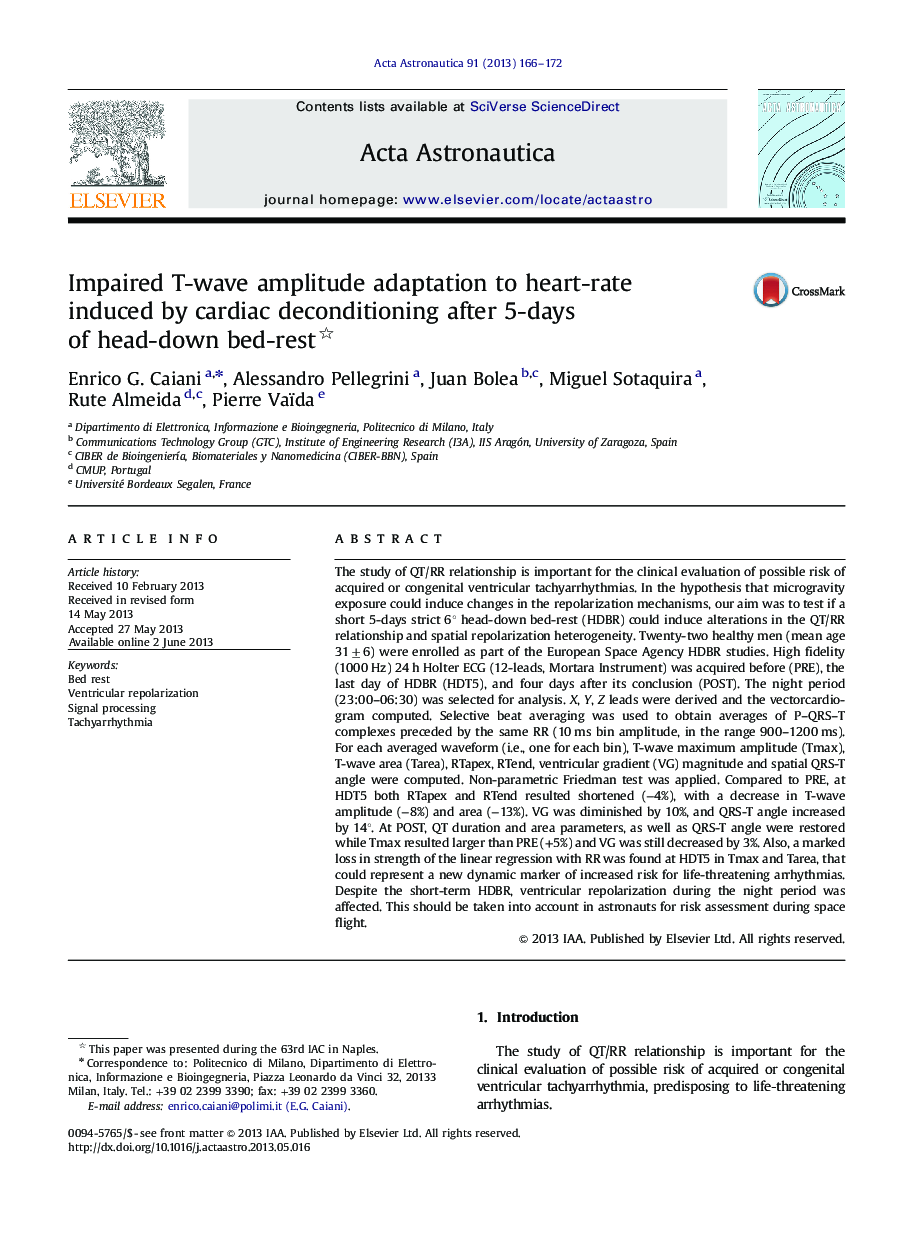| کد مقاله | کد نشریه | سال انتشار | مقاله انگلیسی | نسخه تمام متن |
|---|---|---|---|---|
| 1714718 | 1519959 | 2013 | 7 صفحه PDF | دانلود رایگان |

• We studied changes in ventricular repolarization induced by 5-days head-down bed rest.
• Bed rest induced higher repolarization heterogeneity, linked to arrhythmias' risk.
• T wave amplitude adaptation to RR was impaired after bed rest.
The study of QT/RR relationship is important for the clinical evaluation of possible risk of acquired or congenital ventricular tachyarrhythmias. In the hypothesis that microgravity exposure could induce changes in the repolarization mechanisms, our aim was to test if a short 5-days strict 6° head-down bed-rest (HDBR) could induce alterations in the QT/RR relationship and spatial repolarization heterogeneity. Twenty-two healthy men (mean age 31±6) were enrolled as part of the European Space Agency HDBR studies. High fidelity (1000 Hz) 24 h Holter ECG (12-leads, Mortara Instrument) was acquired before (PRE), the last day of HDBR (HDT5), and four days after its conclusion (POST). The night period (23:00–06:30) was selected for analysis. X, Y, Z leads were derived and the vectorcardiogram computed. Selective beat averaging was used to obtain averages of P–QRS–T complexes preceded by the same RR (10 ms bin amplitude, in the range 900–1200 ms). For each averaged waveform (i.e., one for each bin), T-wave maximum amplitude (Tmax), T-wave area (Tarea), RTapex, RTend, ventricular gradient (VG) magnitude and spatial QRS-T angle were computed. Non-parametric Friedman test was applied. Compared to PRE, at HDT5 both RTapex and RTend resulted shortened (−4%), with a decrease in T-wave amplitude (−8%) and area (−13%). VG was diminished by 10%, and QRS-T angle increased by 14°. At POST, QT duration and area parameters, as well as QRS-T angle were restored while Tmax resulted larger than PRE (+5%) and VG was still decreased by 3%. Also, a marked loss in strength of the linear regression with RR was found at HDT5 in Tmax and Tarea, that could represent a new dynamic marker of increased risk for life-threatening arrhythmias. Despite the short-term HDBR, ventricular repolarization during the night period was affected. This should be taken into account in astronauts for risk assessment during space flight.
Journal: Acta Astronautica - Volume 91, October–November 2013, Pages 166–172